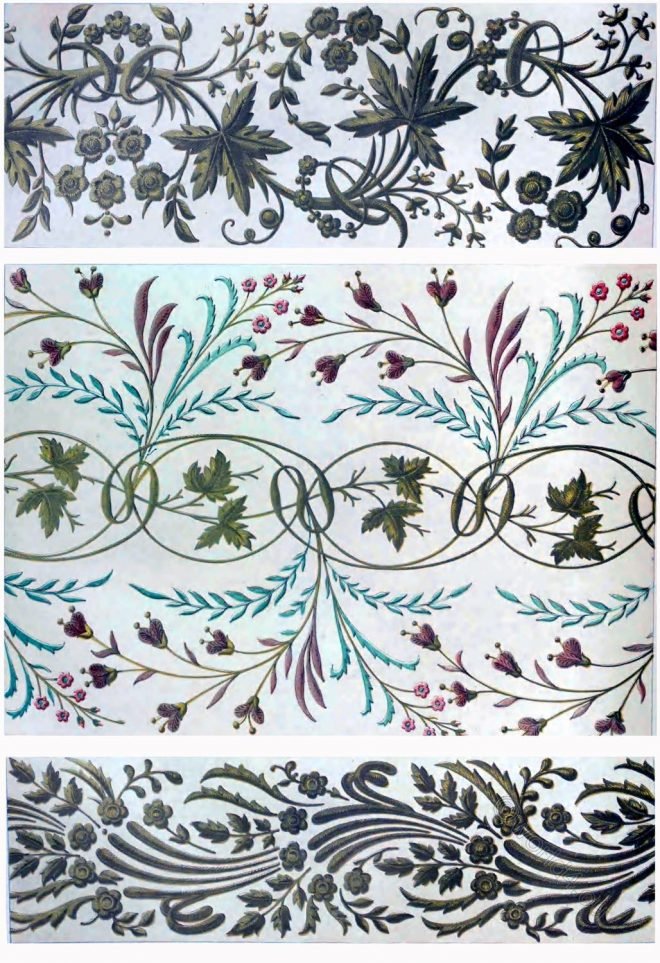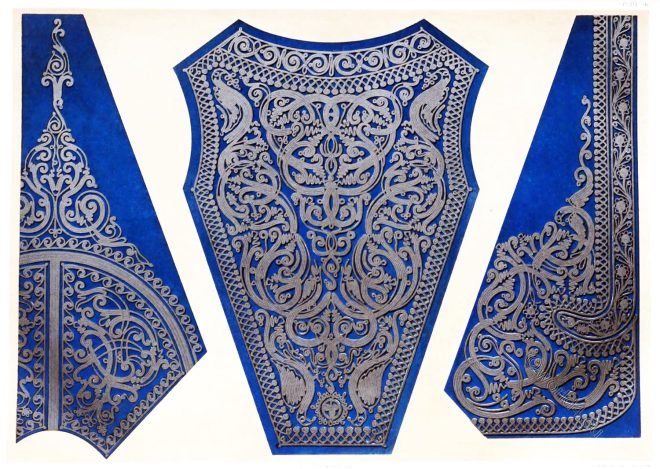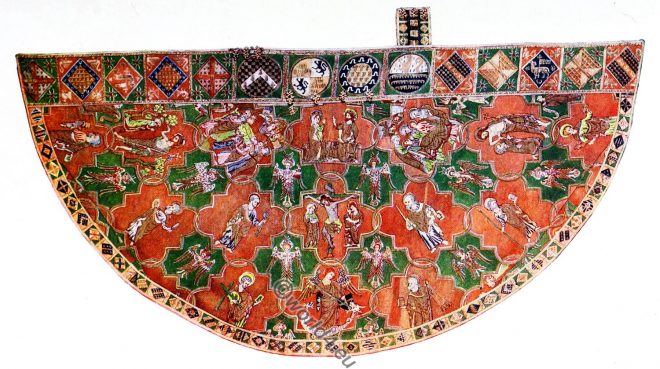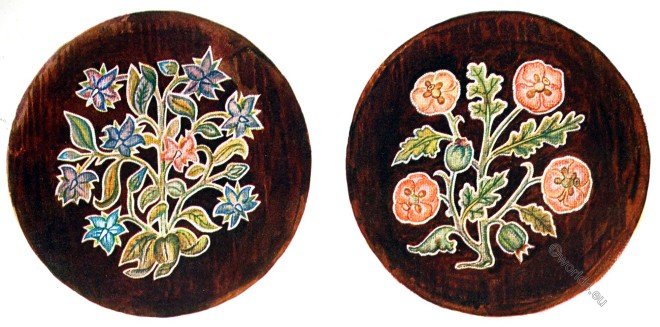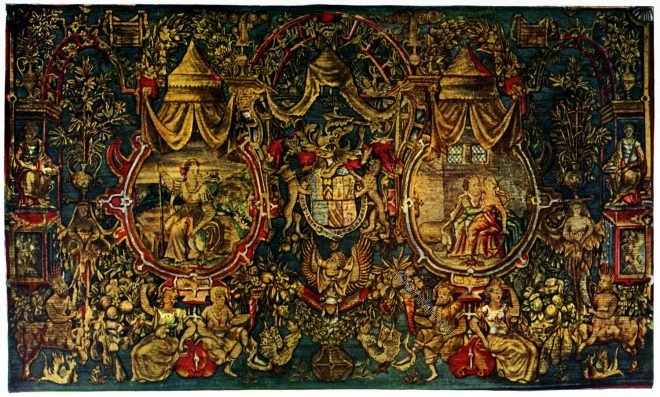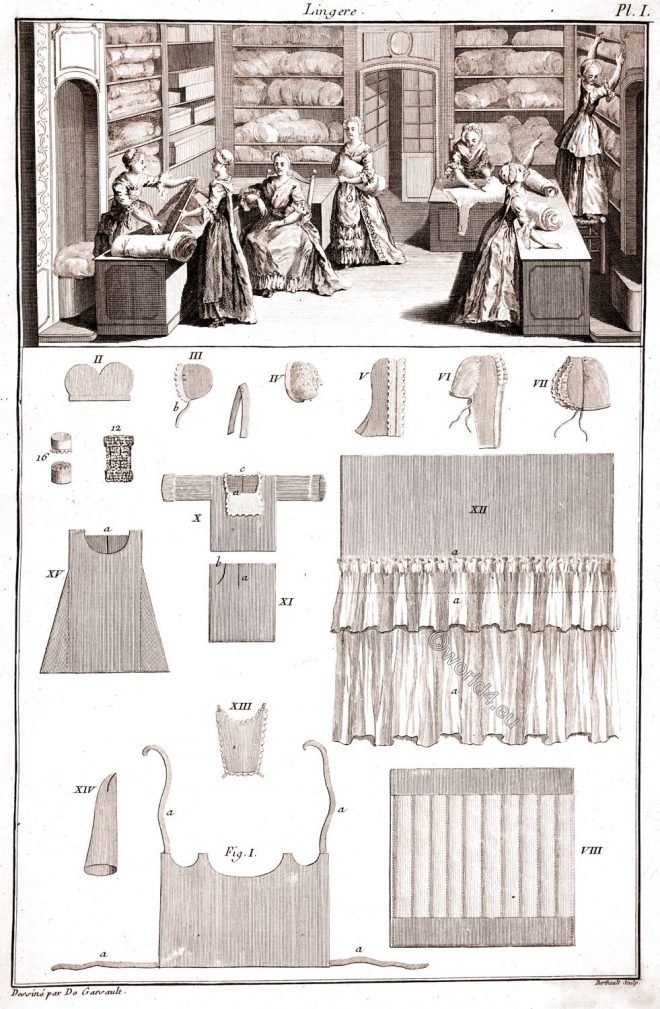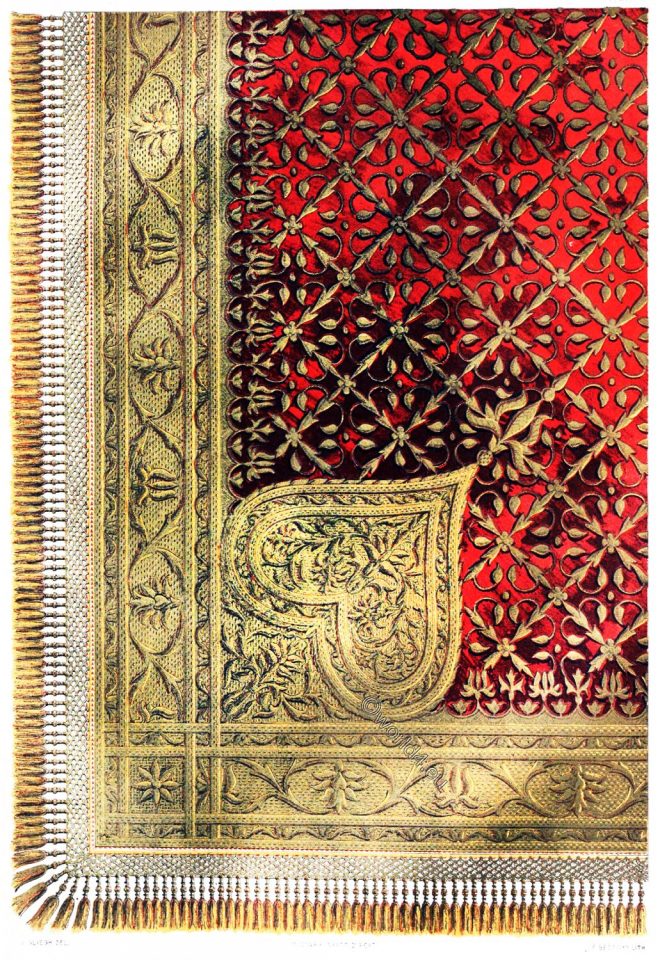Hardwick Hall in Derbyshire is a country house in England and an important example of Elizabethan architecture.
Tag: Embroidery designs
Specimens of Turkish embroidery. The silk goods of Turkey.
Sir Matthew Digby Wyatt (1820-1877) – Specimens of Turkish Embroidery – from the Industrial Arts of the Nineteenth Century (1851-1853).
Greek Embroidery. Portion of a rich Fermeli, or upper jacket.
Portion of a rich fermeli, or upper jacket, which was included in a complete suit of elaborate Palikar costume.
Ornamentation of hangings and stuffs. Embroidery and designs for inlaying. Middle ages.
Polychromatic ornament by Auguste Racinet. THIS plate contains twenty-two examples of the ornamentation of hangings and stuffs, all of them remarkable for simplicity of design.
Embroidered Fukusa. Japan ornamental arts.
Embroidered Fukusa. Japan ornamental arts, by George Ashdown Audsley, 1882.
Opus Anglicanum. The Syon Cope. Ecclesiastical needlework.
The Syon Cope.
A fine example of the ecclesiastical needlework for which England was noted in the thirteenth century; presented to the Duke of Northumberland by refugee nuns from Portugal, to whose convent it belonged, and whom he sheltered at Syon House during the Continental troubles of the early nineteenth century.
Textiles and Embroidery during the Tudor and Stuart Periods.
Art in England during the Elizabethan and Stuart Periods. Textiles and Embroidery by Aymer Vallance.
The “Pembroke” tapestry. Tapestry weaving in England. Tudor 16th c.
The “Pembroke” tapestry at V&A Museum, contains the armorial bearings of Sir William Herbert, 1st Earl of Pembroke in the style known as “grotesque”.
The art of lingerie during the rococo period in Paris c. 1770.
The Vignette represents a Lingerie Shop in Paris, around 1770. Pattern of the most common underwear. Alphabetical and numerical embroidery patterns.
Indian Elephant Trapping produced at Murshidabad, India.
The beautiful elephant howdah, presented by His Highness the Nawab Nazim of Murshidabad to her Majesty the Queen of England.


